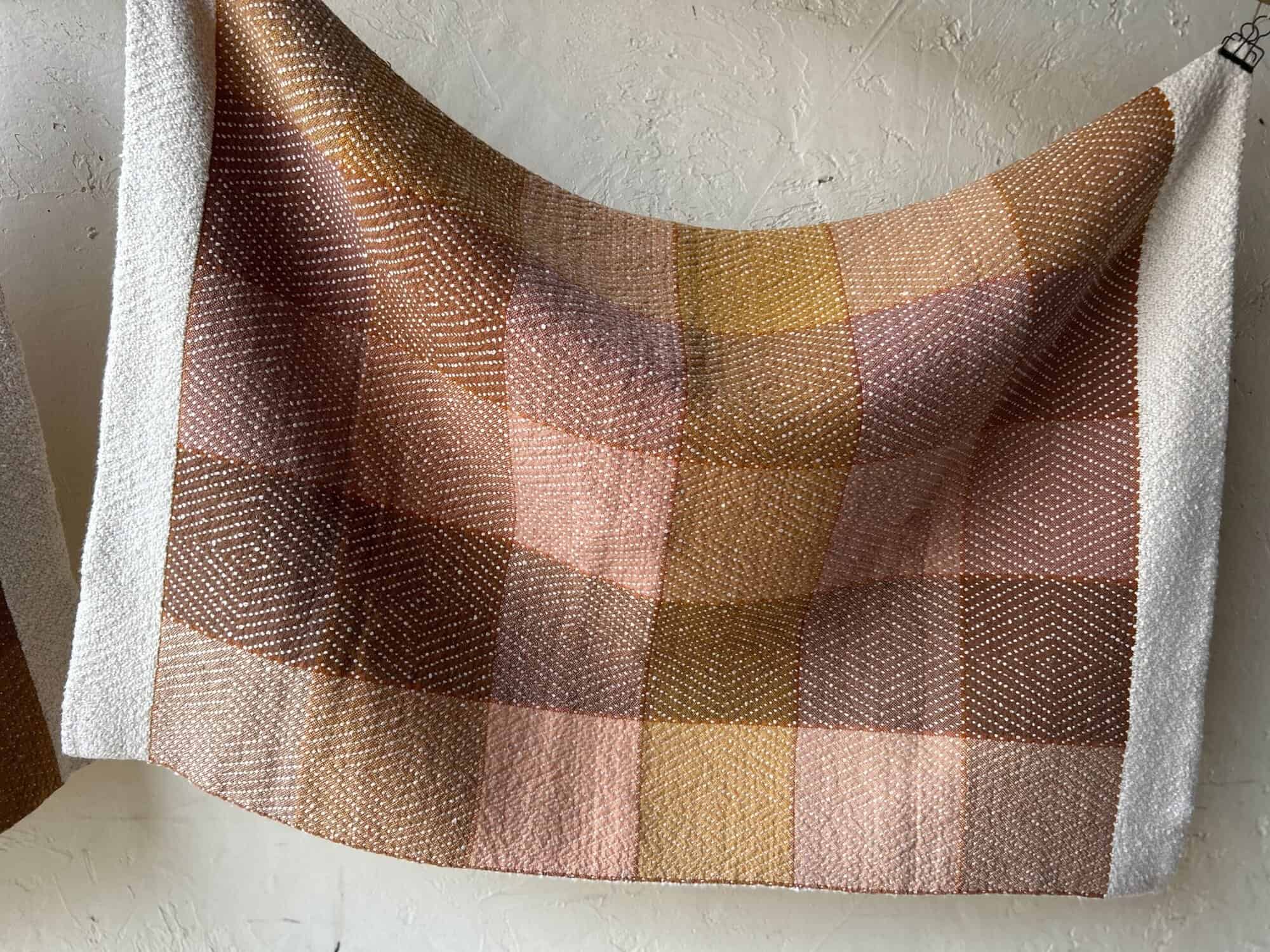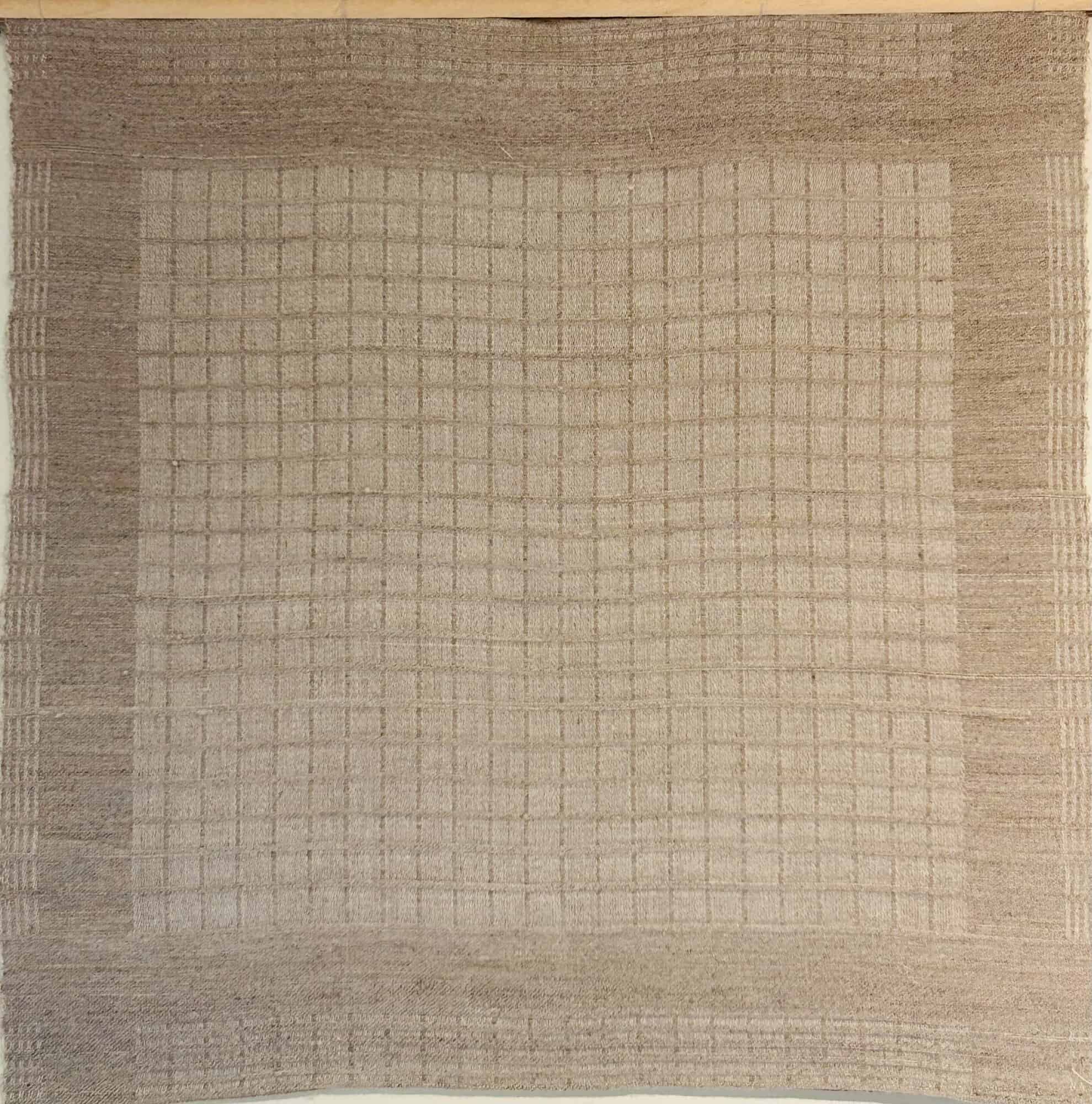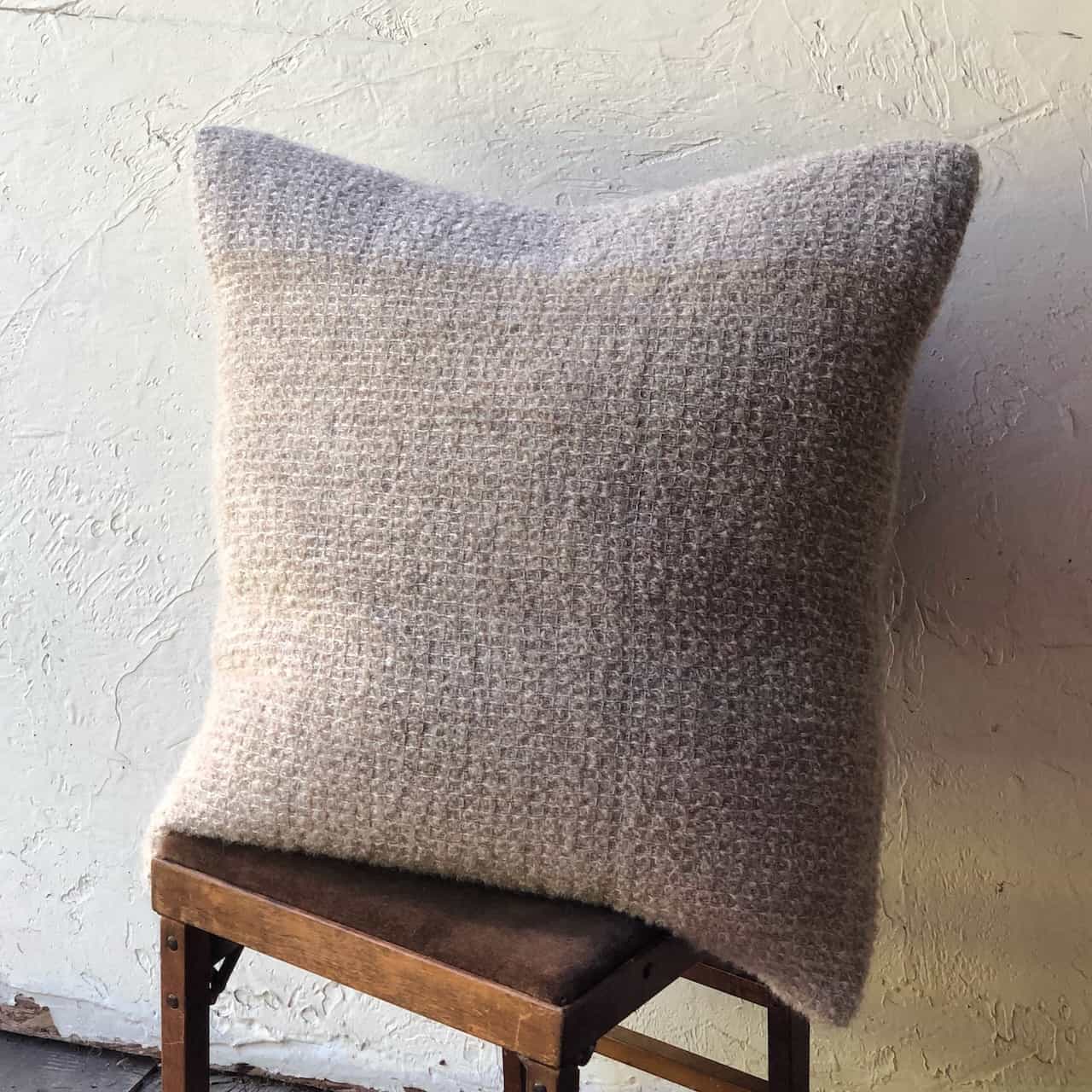Weaving My Way Back • Guest Post by Vishal Vivek
Hello Long Neglected Weaving Pals,
I am re-entering the blogosphere after an extended absence with a guest post by Vishal Vivek co-founder of the Hemp foundation. Vishal has asked me to post a very interesting article he wrote about hemp yarn for hand weavers. I am happy to have him, so please take a look:
A Primer on the Current Experiments in Handweaving with Hemp
There was a time when all hemp fabrics were handwoven. It cannot be any other way since hemp fabrics precede power looms by thousands of years. Hemp is one of the earliest plants that human beings learned to cultivate and use.
The Rich Historical Tapestry of Hemp Fabrics
Archaeologists have found remnants of hemp cloth that they estimate to be some 8,000 years old in present-day Iraq. Back then, it was a part of ancient Mesopotamia. Ancient China was known as the land of silk and hemp. The rich dressed in silk. There was hemp clothing for everyone else.
Lu Shi, a work on the Sung dynasty of China written around 500 CE, mentions that Emperor Shen Nung taught his people to use hemp fibers to make cloth in 1200 BCE.
In 1959, archaeologists discovered the mummified remains of the French queen Arnegunde.
She had been buried in 570 CE. Nearly a thousand years later, in 1533, King Henry VIII of England made it compulsory for farmers to grow hemp.
For every acre of crops, one-fourth of the land had to be dedicated to growing hemp. The fibers were used to make ropes, sails, nets, and other equipment for the English navy. The rule continued till the 1700s in the English colonies.
In North America, the earliest use of hemp fibers for weaving dates back to 1616. People at Jamestown in Virginia used hemp fibers to produce ropes and sails. Jamestown was the first permanent English settlement in what would later become the United States of America.
A rich tapestry of history, indeed. However, there’s a history of prohibition also.
The Hemp Yarn
Hemp, or industrial hemp as the US terms it, is a variety of the plant species Cannabis Sativa L. The drug cannabis or marijuana is also a plant belonging to the same species. That had caused major confusion in the early 20th century among the then rulers of the world.
There is an important difference between hemp and its botanical relative marijuana. Tetrahydrocannabinol, better known as THC, is present in high concentration levels in marijuana. However, THC presence is limited to 0.3% or less in hemp.
THC is the substance with psychoactive properties. The high presence of THC gives marijuana its capacity to get people high. Hemp has no such effects. This critical distinction got overlooked, and hemp got banned in many countries of the world, including the US.
It took longer than half a century for this mistake to be realized. From the mid-1990s, the decriminalization of hemp started with Europe taking the lead. In the US, the Farm Bill 2018 has finally legalized hemp and products derived from it across the country.
Hemp is an exceptionally versatile plant usable in its entirety for a broad spectrum of products. From food to medicines, textiles to bioplastic, building materials to biofuels for our cars – hemp can yield it all. Hemp is a remarkably sustainable alternative to a lot of environmentally harmful stuff we use now.
Handweaving Hemp Today
Handweaving hemp fabrics is still a way of life for Hmong women. Men have no role to play in the entire process, from spinning the yarns to the weaving of the fabrics. The Hmong are an ethnic subgroup of the Miao people living in eastern and southeastern China, Laos, and Vietnam.
Traditional methods of handweaving hemp fabrics continue in several regions of Eurasia. However, with increasing interest in finding sustainable alternatives to ecologically unsound practices, there is a renewed interest in hemp fabrics.
Hemp uses about half the water of cotton and needs no pesticides. Its yield per hectare is 200-250% more than cotton. Hemp fabrics are soft as linen, more durable than cotton, and offer complete protection from UV rays. Hemp fabrics are also naturally resistant to moth and mold.
Much of the current products using hemp fabrics are machine-made. However, the lingering appeal of handwoven textiles is inspiring contemporary hemp entrepreneurs to modernize traditional production techniques without eliminating the handweaving bit.
China, once a country of hemp clothing for everyone other than the royalty and the nobility, produces very little hemp fabrics today. The country remains the largest supplier of hemp globally, but handweaving hemp textiles is a dying tradition in the country.
However, other Asian countries like India and Nepal are cashing in on the rising popularity of hemp textiles. Entrepreneurs are experimenting with producing handloom textiles with 100% hemp and mixing it with other natural fibers as well.
Handloom textiles with a mix of 40% hemp and 60% organic cotton are being produced in the northeastern Indian state of Manipur. The small Himalayan country Nepal is experimenting with producing handloom fabrics using 40% hemp, 30% organic cotton, and 30% wool.
Little-known European countries like Latvia are adding a new edge to the fashion industry by producing handwoven textiles with a mix of hemp fibers and silk. Santa Fe in New Mexico is nurturing initiatives to produce handwoven hemp textiles using a blend of hemp and cotton.
Emerging Trends
Handwoven textiles with a mix of cotton and hemp have emerged as a preferred material for t-shirts in many regions across the globe. However, the trend is especially prevalent in some Europen Union countries. The increased tensile strength of the material is fueling this popularity.
The fashion industry in the west is warming up to hemp fabrics in general and to handwoven hemp textile in particular. This is partially a result of studies reflecting the negative environmental impact of the fashion industry.
Known fashion brands are showcasing designer clothes made with a mix of handwoven hemp and cotton, or cotton and wool. Apparel designed from handwoven hemp fabrics and textiles produced from recycled polyester has caught people’s imagination. Experiments with handwoven materials using hemp and silk are also gaining currency.
Weaving the Future
As the world’s citizens become increasingly more conscious of the environmental burden of a wide range of current practices, lessons to be learned from ancient wisdom are resurfacing. The renewed interest in hemp is an indicator.
Experiments with hemp textiles are happening in different parts of the world. Perhaps in not too distant a future, we will see Hollywood celebrities arrive for the Oscars in designer dresses made from hemp fabrics handwoven by Hmong women in a remote Laos village.
Author Bio: Vishal Vivek, Co-founded Hemp foundation to increase awareness about the most misunderstood plant on the planet. He believes that we can fight climate change, water crisis and plastic pollution with Hemp. Times Group recognized him as a legendary entrepreneur and published his biography in “I Did IT- Vol 2” at the age of just 30!
Author’s Email id – info@hempfoundation.net




Mary THOMAS-REILLY
Thank you for that information on hemp. Have you woven with it?
Elisabeth Hill
Hi Mary,
Thanks for connecting. And yes, I have woven with hemp quite a bit, and have mixed it with linen in many projects. I have bought it from several sources, and some have been higher quality than others. I am not sure how hemp yarn is graded and quality controlled. With linen we have tow, line and wet-spun, etc. to help us understand what kind of yarn we will be working with. The first hemp I bought was closer to tow linen in that it was a little bit hairy and course. The hemp I got from Lunatic fringe was closer to line linen – smoother with a longer staple.